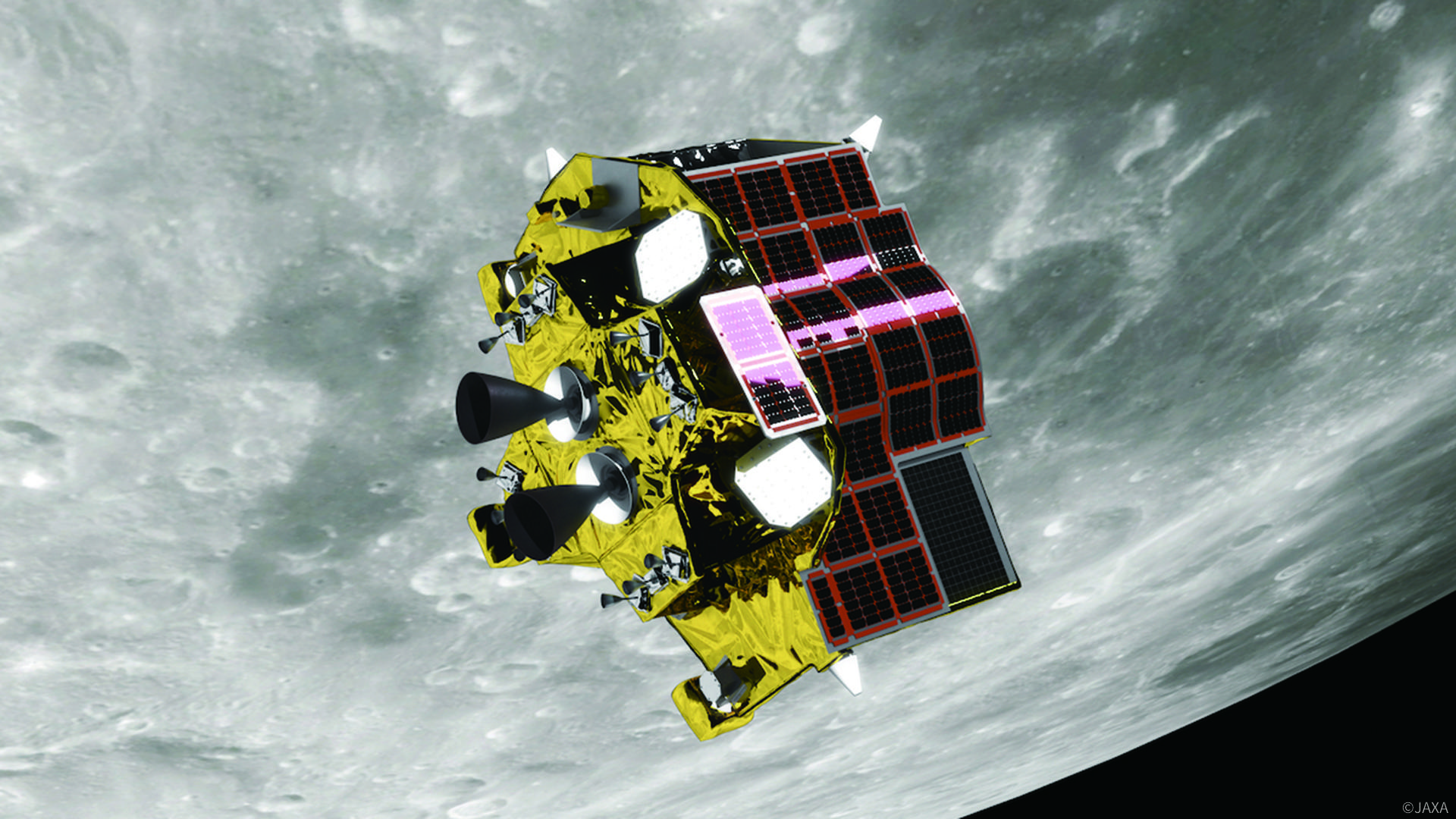
Moon

Moon
Smart Lander for Investigating Moon (SLIM)
Taking on the challenge of landing on the moon at an accuracy of approx. 100 meters
There is a huge difference in the significance of being able to land where it is easier to land, and being able to land where you want to land. SLIM, which is scheduled for launch on the H2A rocket in FY2021, aims to achieve the latter. It is an unmanned, small-sized moon landing demonstration probe developed for the purpose of verifying high precision landing technologies. While the order from various countries in moon landing accuracy is in units of kilometers, SLIM aims to answer to an order of 100 meters.
Shinichiro Sakai, the Project Manager for SLIM, commented, "SLIM, which is 2.4 meters in height and has a main body weight of about 200 kilograms, is really small and lightweight compared to existing probes. So we're attempting a technological demonstration in pinpoint landing using this type of equipment, which I think is quite a unique endeavor."
"The biggest highlight of the landing process will probably be after SLIM begins its final descent, when it approaches its target point by verifying the images, and finally landing while avoiding obstacles. We expect this process to take about 20 minutes, more or less."
Once SLIM safely succeeds with its pinpoint landing, it is also scheduled to perform scientific observations of the lunar surface. The probe will be loaded with an equipment called the multiband camera, which will be used to observe and analyze the components of the rocks that are believed to originate from the moon's mantle.
"We've already used the data acquired from the Selenological and Engineering Explorer 'KAGUYA' (operation currently ended) to identify the site where the rocks are scattered. Based on this data, we selected the Sea of Nectar, located in the lower latitude area of the near side of the moon, as our targeted landing point. Rather than having a flat terrain, the surface of this sea slopes at a certain and consistent angle, and is believed to have olivines (rocks) originating from the inside of the moon exposed out on the surface. Analyzing olivine will help us understand the origins of the moon."
Last year, the basic design of SLIM was finalized. And this year, we entered the phase for finalizing the detailed design. More than a total of 100 experts and specialists, including Sakai and other JAXA staff as well as those from private companies and universities, are working together toward the launch of SLIM in FY2021.
"The high accuracy landing technology that SLIM is attempting to demonstrate is a technology that has universal applications. We'll probably be seeing plans to land on targeted locations identified via prior observations, not only on the moon but also on other celestial bodies with gravitational pull. So, there will come a time in the future when SLIM's technologies will be utilized in various ways."
Profile

|
|
|---|
- Home>
- Global Activity>
- Public Relations>
- JAXA’s>
- JAXA's No.77>
- Moon